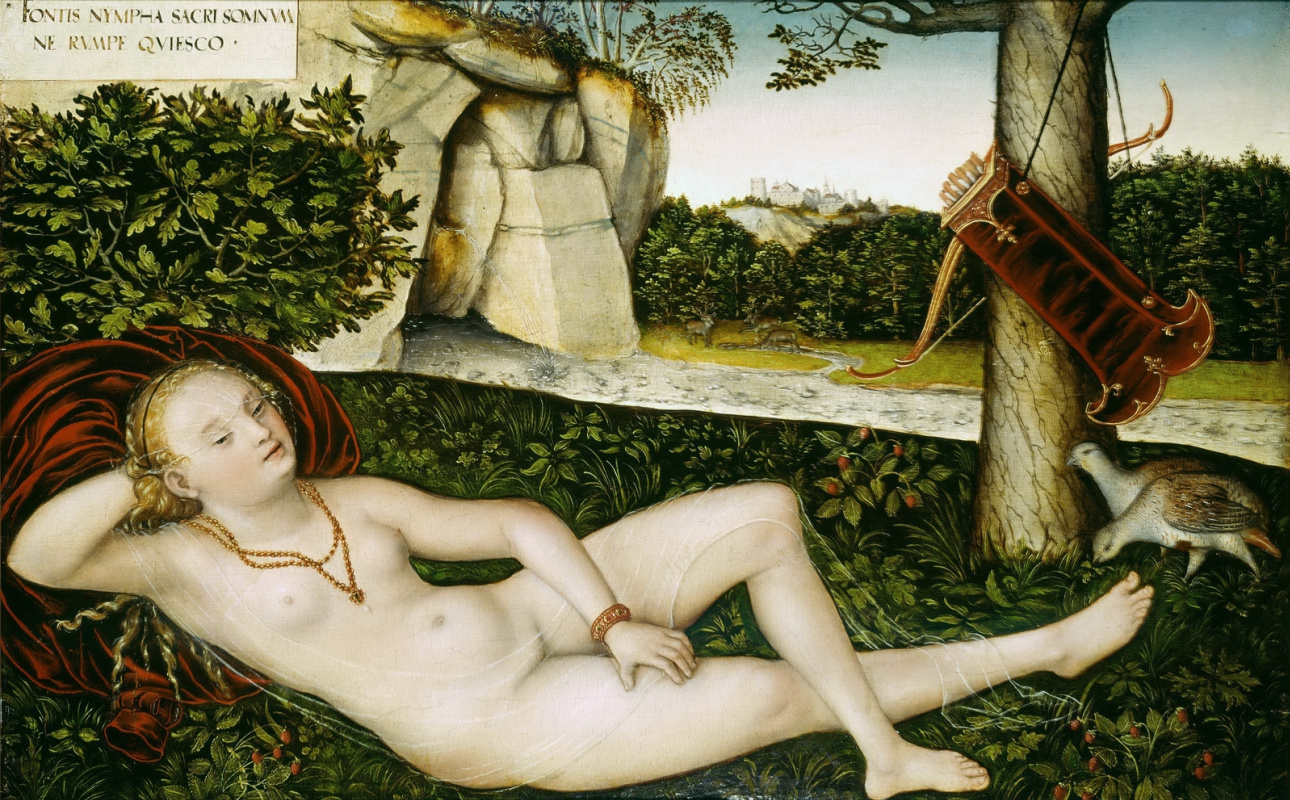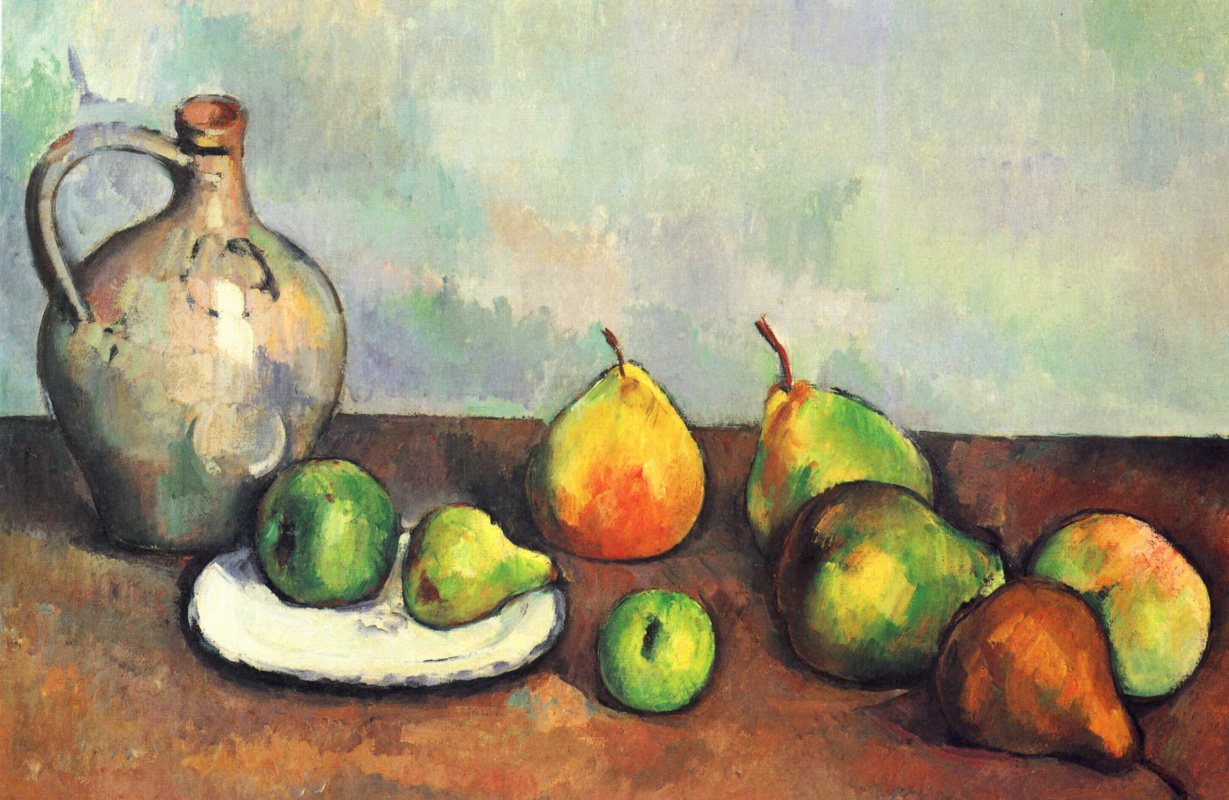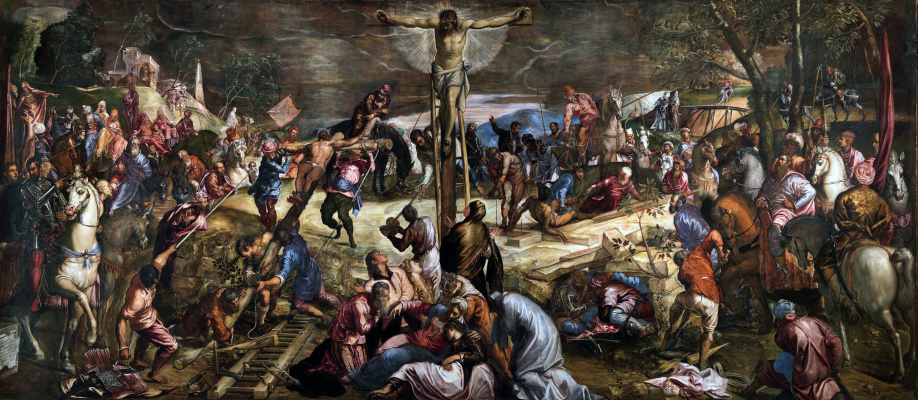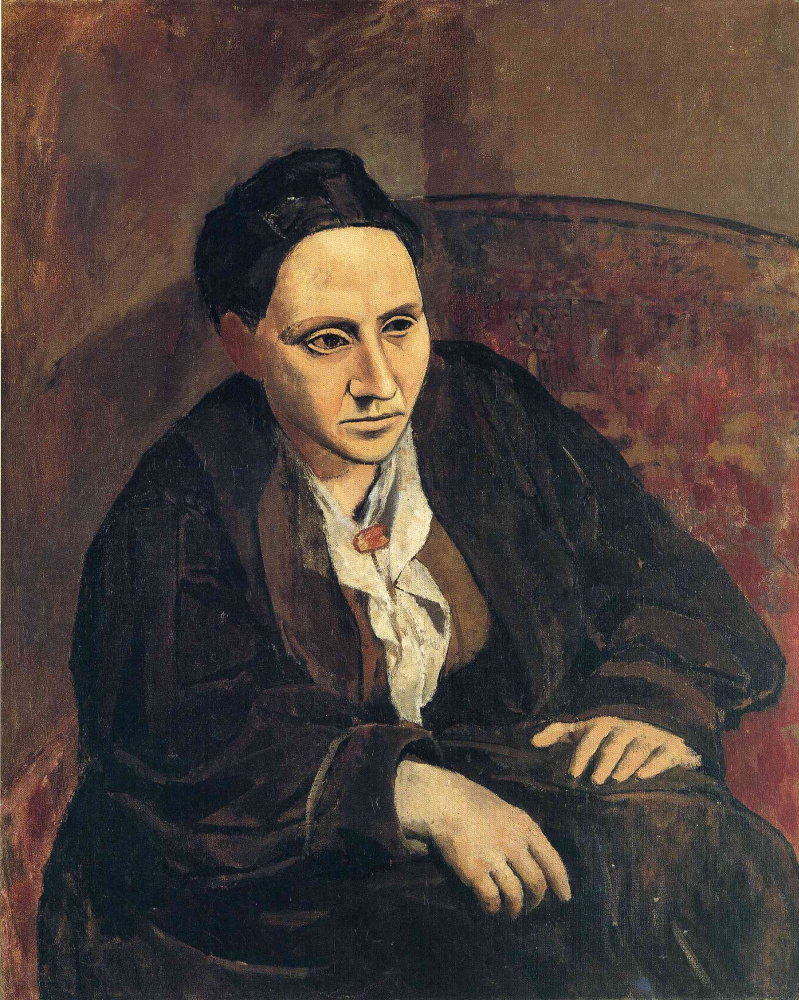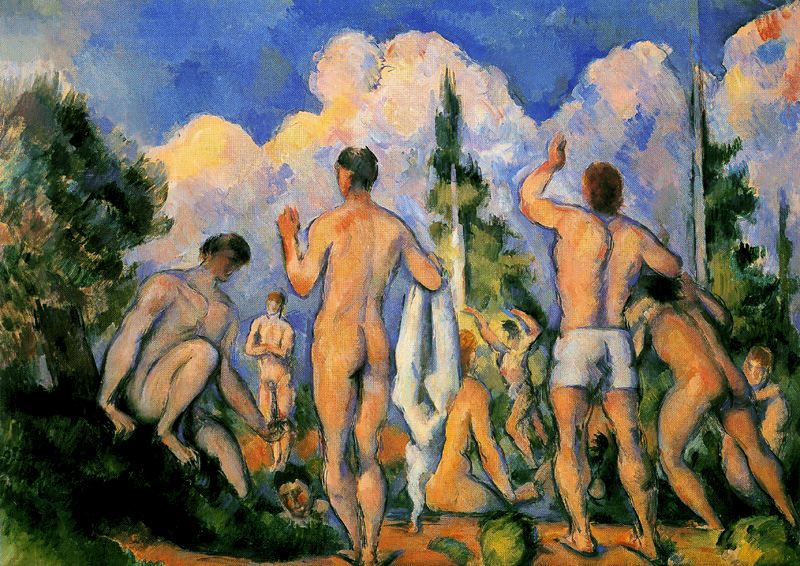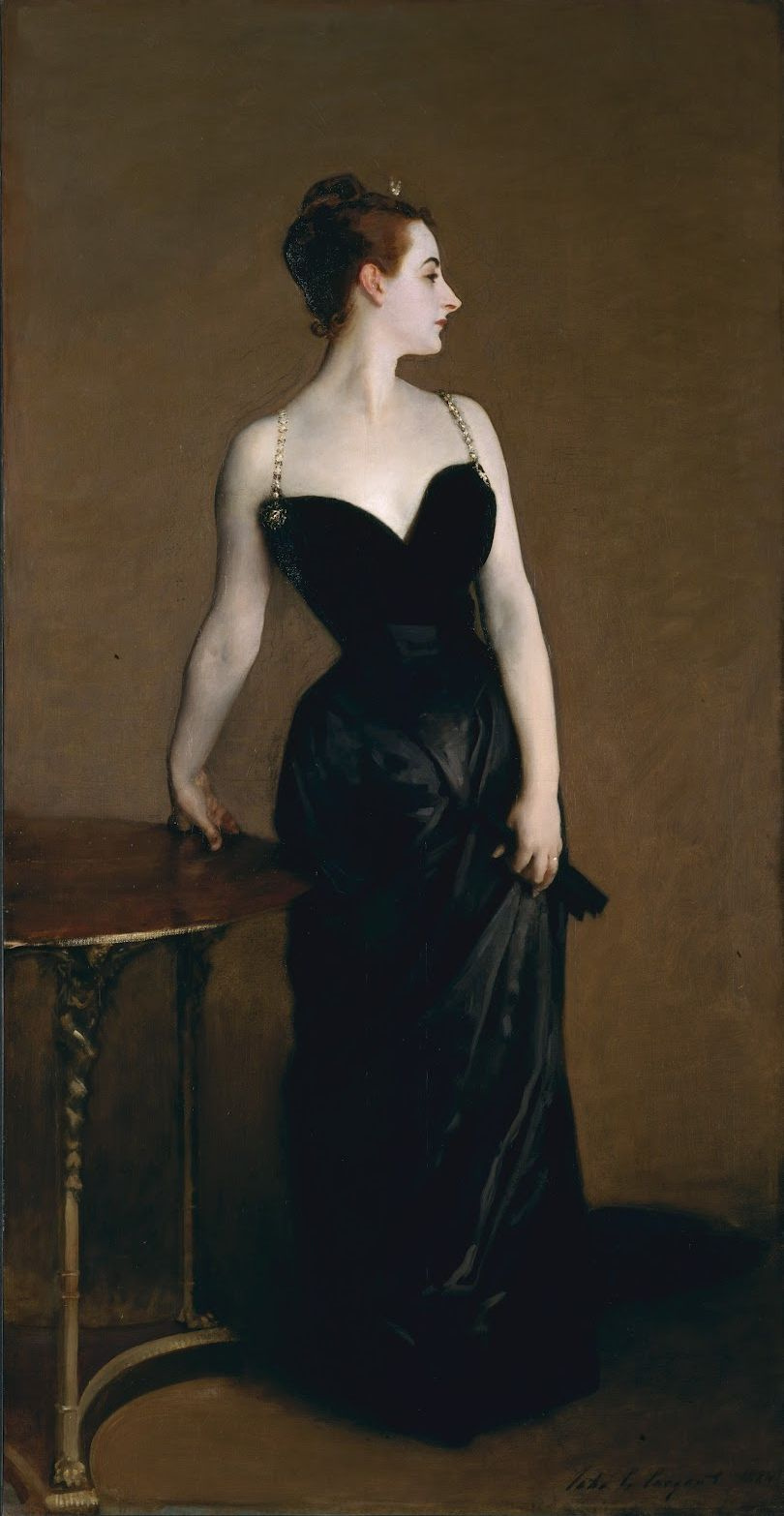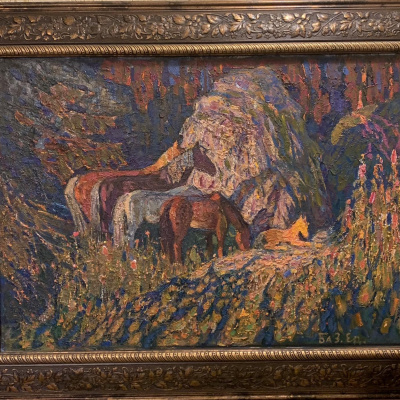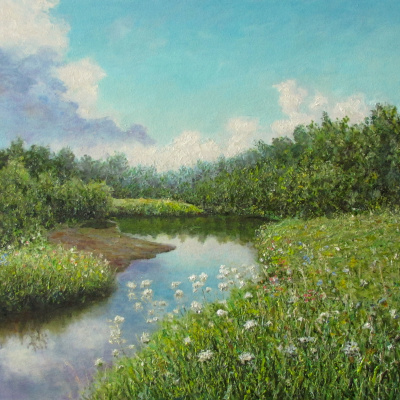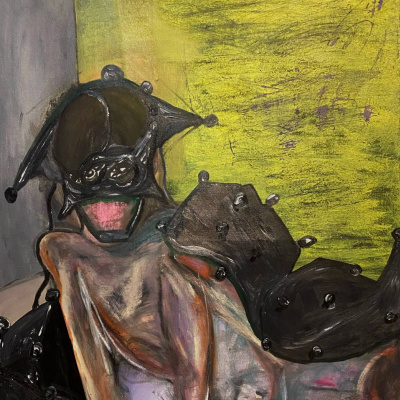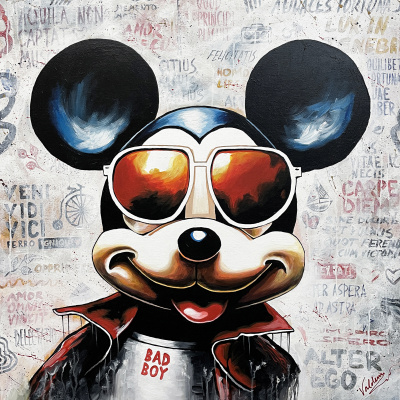In the new film by Woody Allen, his 20-year-old alter ego arrived in New York for a weekend and first of all, went to the museum, and only after that he played poker, drank and met the demi-mondaines. Arthive is figuring out the role of the visual arts in his films, and which artists have attracted Allen’s attention from 1969 to the present day.
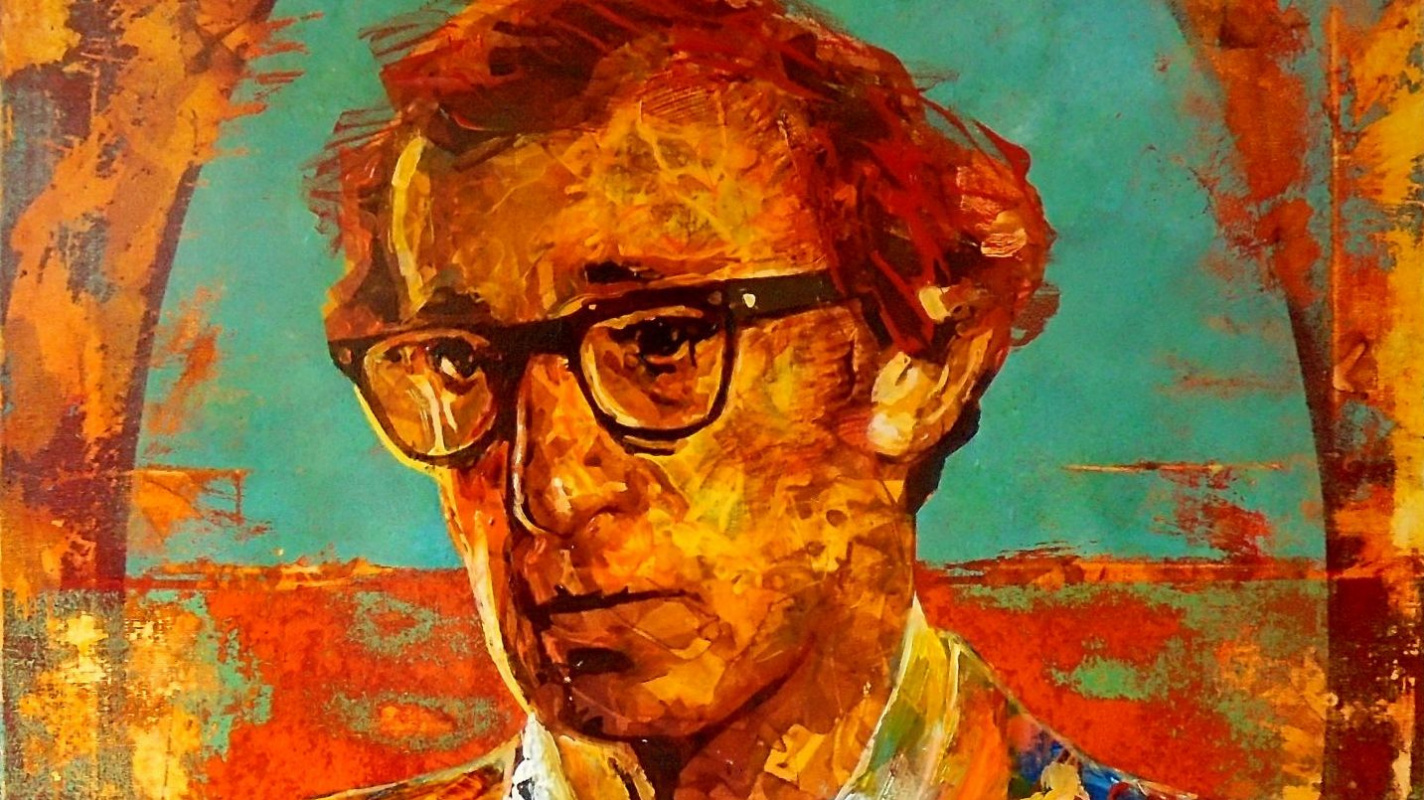
Take The Money And Run (1969)
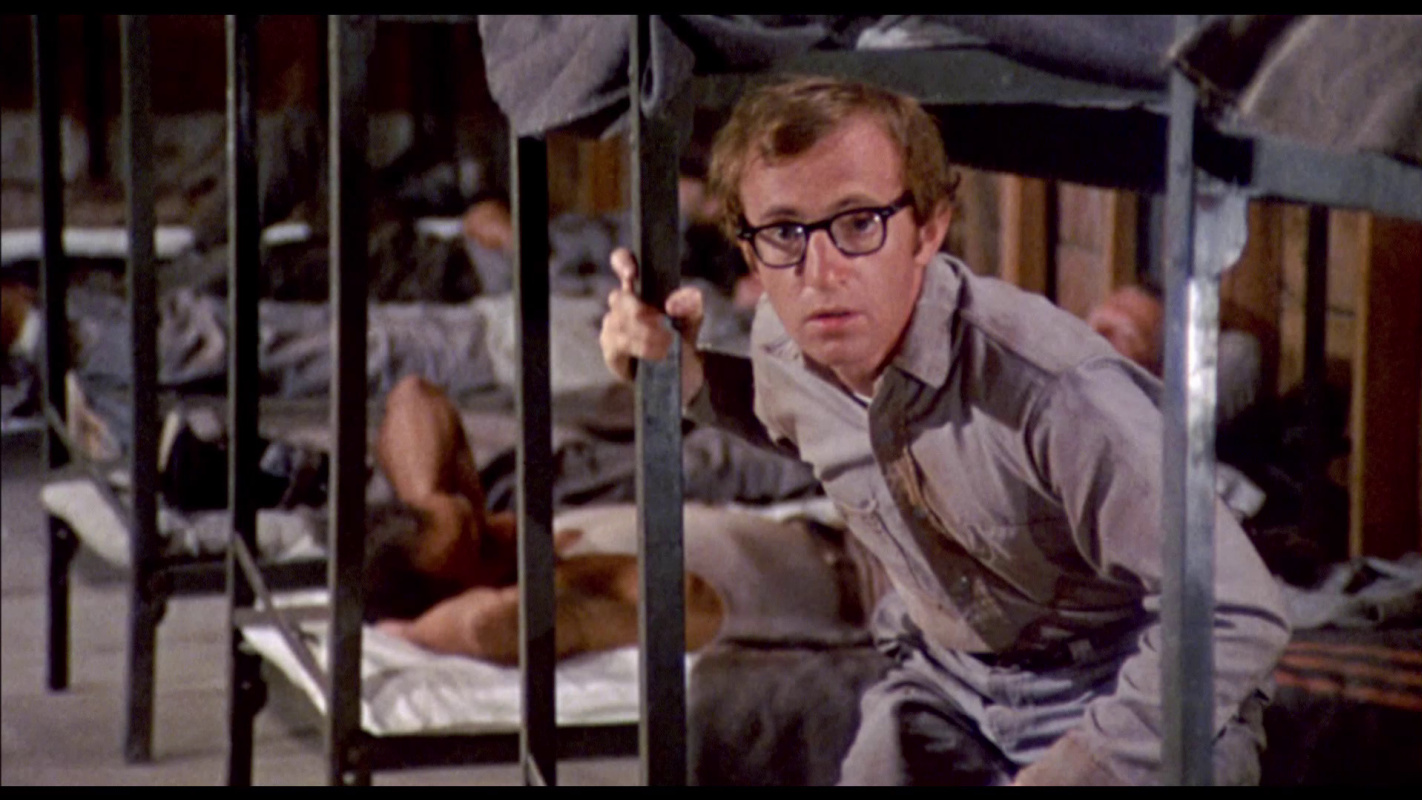
What is all this?
Allen’s hero Virgil Starkwell discovered criminal tendencies early on. In his childhood (when Virgil dreamed of becoming a cellist) he stole to pay for lessons. Once bullies smashed his tool (and stomped his glasses), and Virgil decided to become a professional robber. Society did not appreciate this impulse (his playing the cello was a much greater crime). Virgil was put in jail (previously the judge broke his glasses). Then he met a good girl, tried to become an honest man, but in vain — apparently, he was born to take the money and run.
Allen’s hero Virgil Starkwell discovered criminal tendencies early on. In his childhood (when Virgil dreamed of becoming a cellist) he stole to pay for lessons. Once bullies smashed his tool (and stomped his glasses), and Virgil decided to become a professional robber. Society did not appreciate this impulse (his playing the cello was a much greater crime). Virgil was put in jail (previously the judge broke his glasses). Then he met a good girl, tried to become an honest man, but in vain — apparently, he was born to take the money and run.
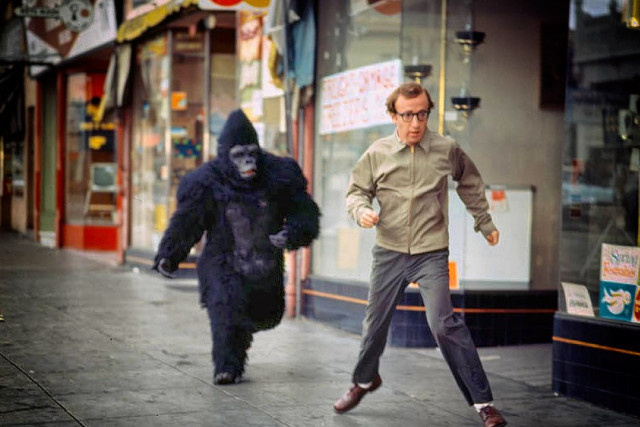
This mocumentary comedy film hails from that beautiful epoch, in which Woody Allen did not yet find psychoanalysis, or divorce proceedings, or Dostoevsky, or Greek tragedies amusing, and made some truly hilarious comedies. Long before Pierre Richard monopolized the role of the movie scatterbrain, Woody hurried for a date and forgot to put on his trousers, turned not to the right, but to the left of the elevator, charmed beauties in spite of all the laws of the universe, in a word, shone in the image of a gawk romantic.
Where to look
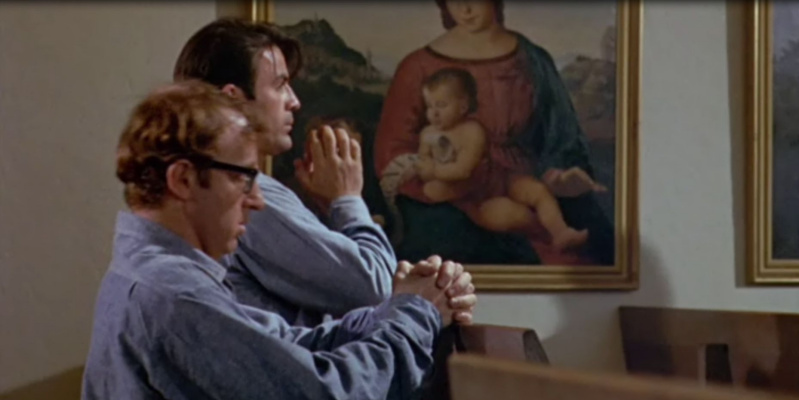
In the scene in the prison chapel, there is Raphael's Madonna Terranuova (or its very good copy). Woody needed it to emphasize the determination of his character. Even under the watchful eye of the Mother of God, he remained faithful to his vocation. Don’t overestimate the ennobling power of art, and don’t be fooled by Virgil’s reverent and humble appearance. He is scheming to escape, and has come to the chapel to get weapons. You can get much farther with a prayer and a gun than you can with a prayer alone.
Bananas (1971)
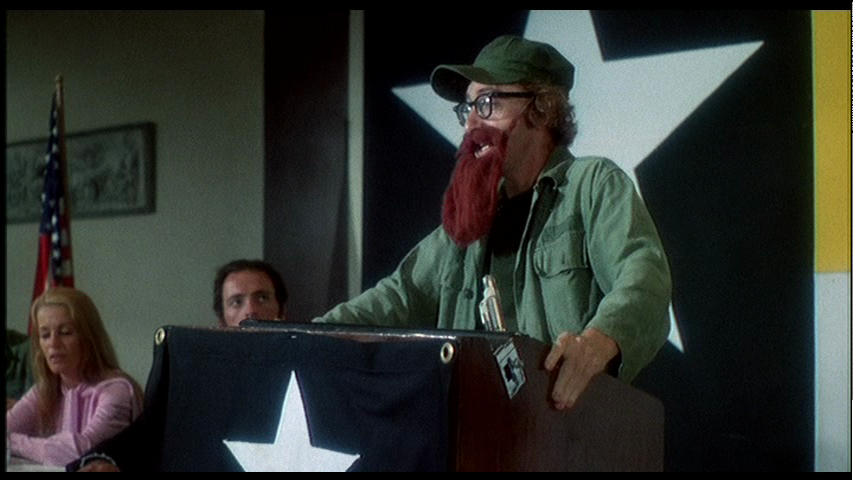
What is all this?
Fielding Mellish is a neurotic blue collar man who tries to impress social activist Nancy, who is concerned about events in the fictional banana republic of San Marcos. To demonstrate his leadership qualities to the girl properly, Fielding goes to San Marcos, where he arranges a military coup without much effort.
Fielding Mellish is a neurotic blue collar man who tries to impress social activist Nancy, who is concerned about events in the fictional banana republic of San Marcos. To demonstrate his leadership qualities to the girl properly, Fielding goes to San Marcos, where he arranges a military coup without much effort.
Where to look
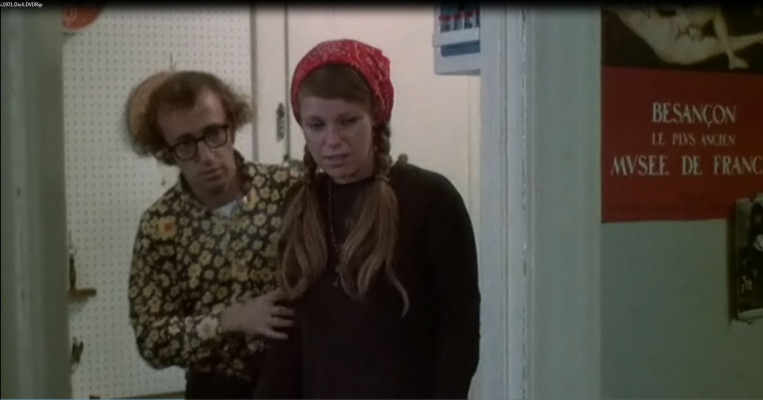
Although Woody Allen himself claims that he became the comediograph influenced by Bob Hope, Charlie Chaplin and Groucho Marx, his Bananas movie, like the previous film, is full of patented French oddities. No wonder in the scene where Fielding, powdered with baby powder, seduces his beloved, she asks him to say "I love you" in French (Fielding, who does not know French, suggested Hebrew as an alternative).
Allen of the Bananas period is Allen, in which the aesthete has not yet defeated the comedian. However, some dotted blotches of beauty are already noticeable here. Now young (and unknown to anyone) Sylvester Stallone appears in the frame . Now the poster of the exhibition of Lucas Cranach Jr. The latter performs two functions at once. First, it throws a "cultural bridge" across the ocean (the exhibition is held in Besançon, France). And secondly, it serves as a favourable background: next to the nymphs of Lucas Cranach Jr., powdered Woody Allen looks quite seductive.
Nymph of the source. after 1540-e
48×73 cm
Play It Again, Sam (1972)
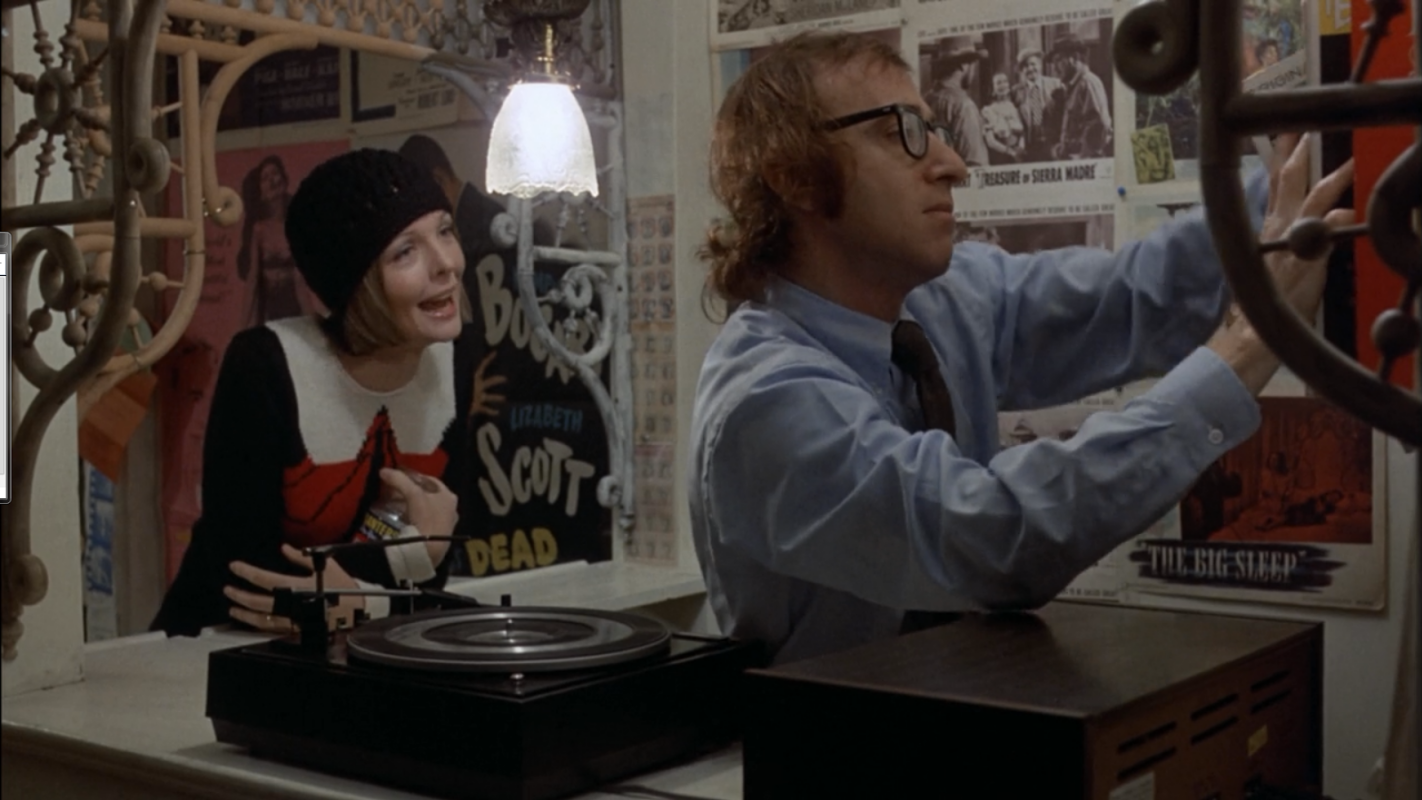
What is all this?
In an interview, Woody Allen said that his acting range is very narrow — he can play either intellectuals or raff. In Play It Again, Sam, he played a film critic (that is, both at once).
Allan Felix is an apocalyptic man, a fan of Casablanca and aspirin; he is going through a hard divorce. Friends advise him to start a new relationship, but it is not easy for Allan. He is bald, unsure of himself, enchantingly awkward (a fork in his hand is a good reason to announce an evacuation) and also finicky: for self-defense reasons, Allan prefers to reject "applicants" before they reject him.
From time to time, Humphrey Bogart steps off the screen to give some good advice to the poor wretch ("there is nothing that a slap, a revolver and a bourbon cannot handle"), but even Bogart cannot help.
In an interview, Woody Allen said that his acting range is very narrow — he can play either intellectuals or raff. In Play It Again, Sam, he played a film critic (that is, both at once).
Allan Felix is an apocalyptic man, a fan of Casablanca and aspirin; he is going through a hard divorce. Friends advise him to start a new relationship, but it is not easy for Allan. He is bald, unsure of himself, enchantingly awkward (a fork in his hand is a good reason to announce an evacuation) and also finicky: for self-defense reasons, Allan prefers to reject "applicants" before they reject him.
From time to time, Humphrey Bogart steps off the screen to give some good advice to the poor wretch ("there is nothing that a slap, a revolver and a bourbon cannot handle"), but even Bogart cannot help.
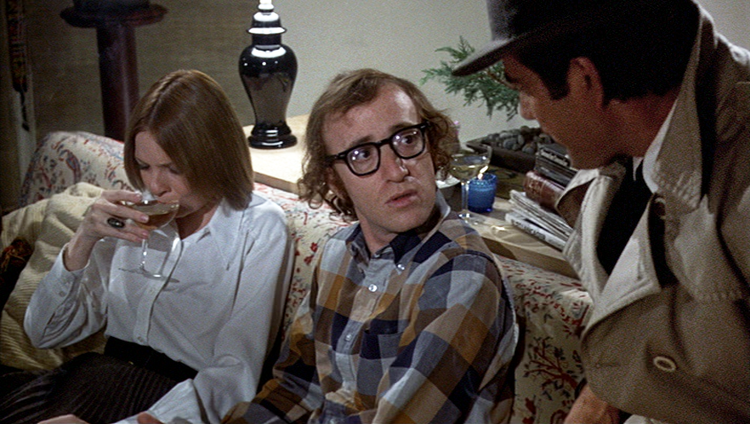
The only one the hero gets along with is his old friend Linda. They have the same complexes, neuroses, tastes for antidepressants, they have similar herpes and, in general, an amazing relationship of souls. The problem is Linda’s marriage to Allan’s best friend.
Play It Again, Sam was directed by Herbert Ross, although it is often referred to as a Woody Allen movie for ease of communication. This is a film adaptation of his play and the (highly successful) Broadway production of the same name. And even if it takes place in San Francisco, and not in New York, everything else evidences that it is an anthology of his favourite topics and phenomena: divorce, reflections, panic attacks, Diane Keaton, etc.
Play It Again, Sam was directed by Herbert Ross, although it is often referred to as a Woody Allen movie for ease of communication. This is a film adaptation of his play and the (highly successful) Broadway production of the same name. And even if it takes place in San Francisco, and not in New York, everything else evidences that it is an anthology of his favourite topics and phenomena: divorce, reflections, panic attacks, Diane Keaton, etc.
Where to look
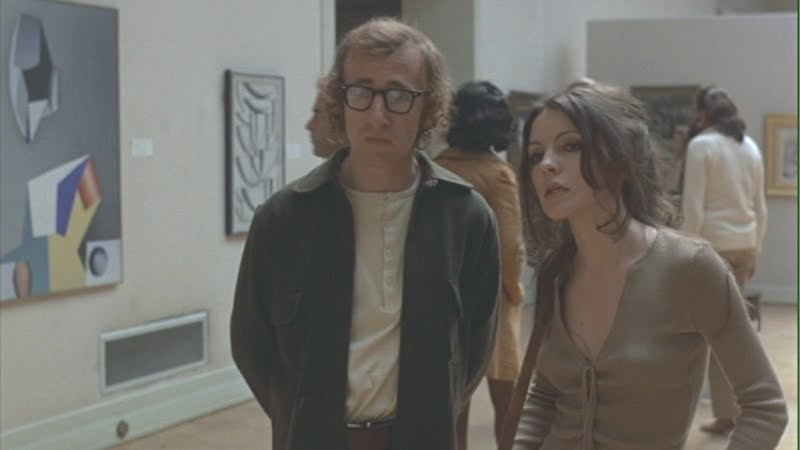
In search of another victim, Allan comes to the Museum of Modern Art in San Francisco (in 1972, it was just the Art Museum of San Francisco) and finds a suitable one at the Keepers of Secrets picture by Jackson Pollock. The girl is beautiful, contagiously depressed, and definitely not stupid. Asked about her plans for Saturday, she replied: "I'm committing suicide." "What about Friday?" the hero asks timidly.
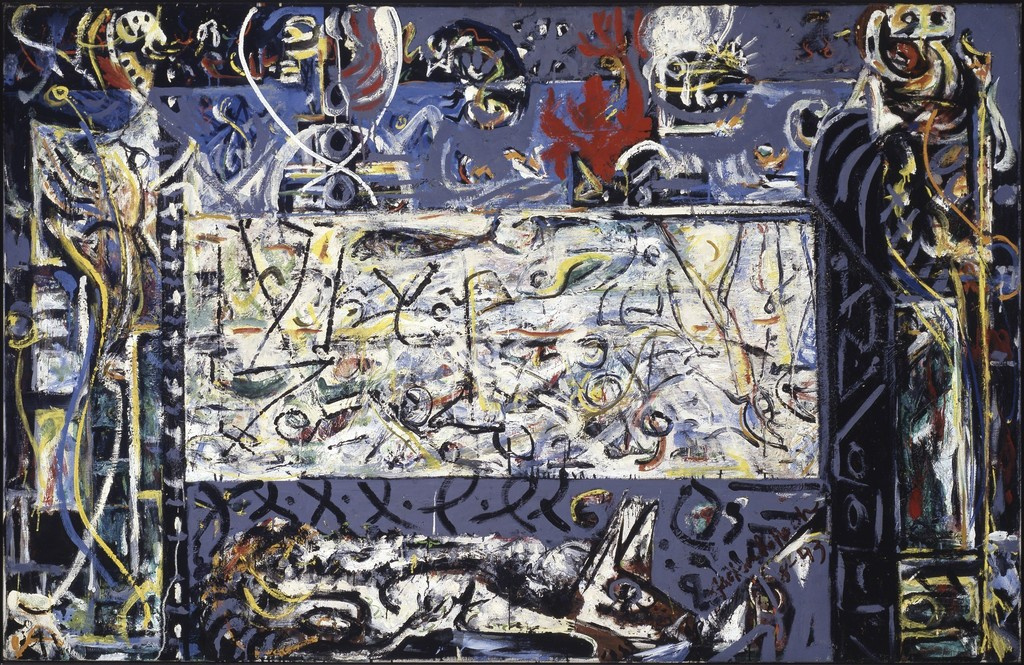
Jackson Pollock. Keepers of Secrets (1943)
Manhattan (1979)
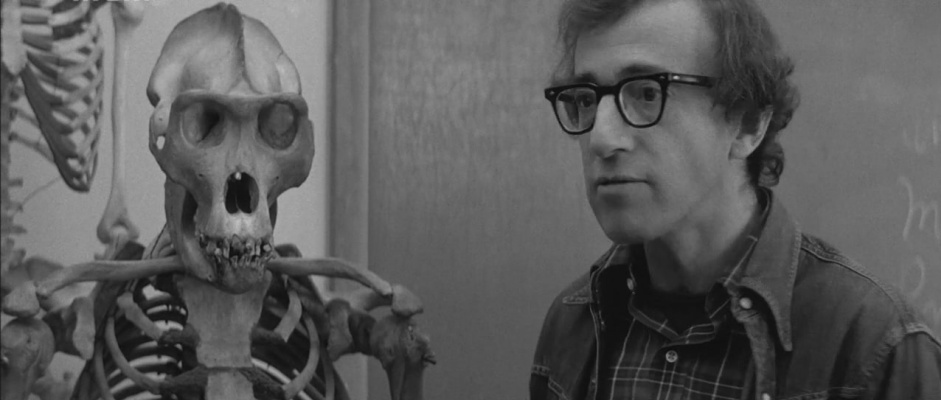
What is all this?
Isaac Davis, a screenwriter who has just quit another stupid TV show, is forced to move to another apartment. At the current place, a suspicious brown liquid pours from the tap, and behind the wall, it seems, someone is plucking parrots alive. However, housing troubles are the least of his troubles. Isaac’s ex-wife (who left him for a woman) writes a "true book" about their marriage and divorce. His current relationship is horizonless: Tracey is a sweet girl, but she is 17, 42-year-old Isaac feels uncomfortable when Tracy asks early leave from dinner because homework needs to be done. In addition, he met Mary, who is more suitable for his age. And although Isaac’s hair (all six hairlines) raises from her pseudo-intellectual tirades, he feels that he is in love.
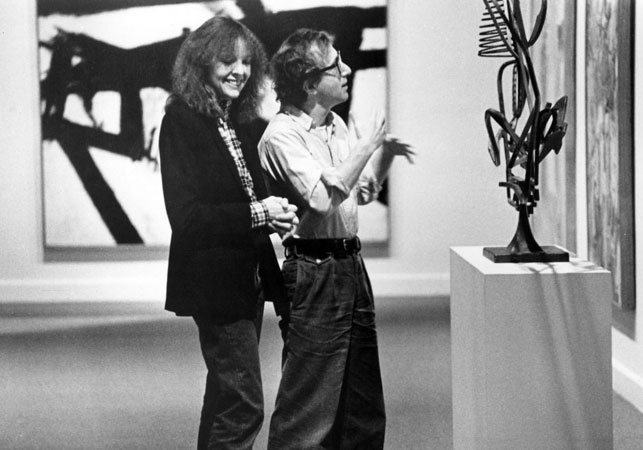
Manhattan is perhaps the first Woody Allen film, in which he is convincing as a human being. He is no longer the hero of a Jewish anecdote, not a character of New York city folklore. He is lively, witty and charming, so much so that by the finale you stop wondering how it happened that a seventeen-year-old is attracted to such a creature (moreover, his ex is Meryl Streep).
Critics believe that Manhattan is the best movie he has ever filmed. Woody himself doesn’t like the movie (they say he even begged MGM bosses not to release it). He seems to have his quirks, like most of his characters.
Critics believe that Manhattan is the best movie he has ever filmed. Woody himself doesn’t like the movie (they say he even begged MGM bosses not to release it). He seems to have his quirks, like most of his characters.
Where to look
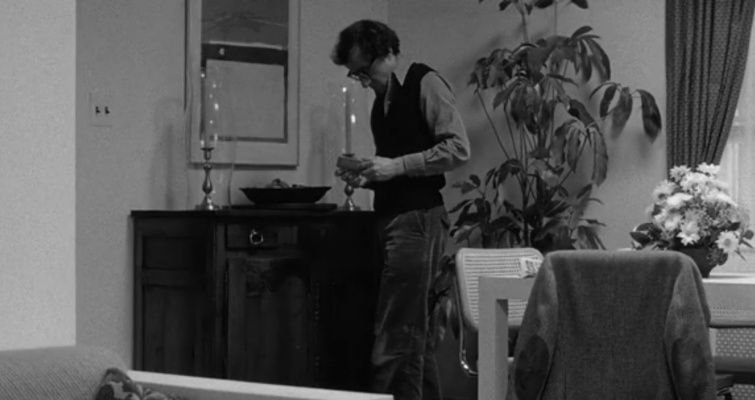
A film with such a title cannot do without iconic art locations: the action moves now to MoMA, now to the Metropolitan. In the dating scene, Isaac and Mary discuss sculptures at the Guggenheim Museum. The latter is fascinated by some kind of cube, "endowed with a powerful potential of denial" (the cube itself is mercifully left behind the scenes). New York, with its bridges, sunrises, smog and eternal chaos, with its concrete palaces, beauties and abundant modern art, is a special city, it can fascinate, but it can also confuse. Carried away by urban romance and chatter about art, the protagonist almost missed the real thing that was very close. This is not a random rhyme. And although a reproduction of Mark Rothko hangs on Isaac’s wall, among the reasons why it is worth living, he calls not it, but "the incredible apples and pears of Cézanne".
Still life with jug and fruits
1894, 43×62 cm
Everyone Says I Love You (1996)
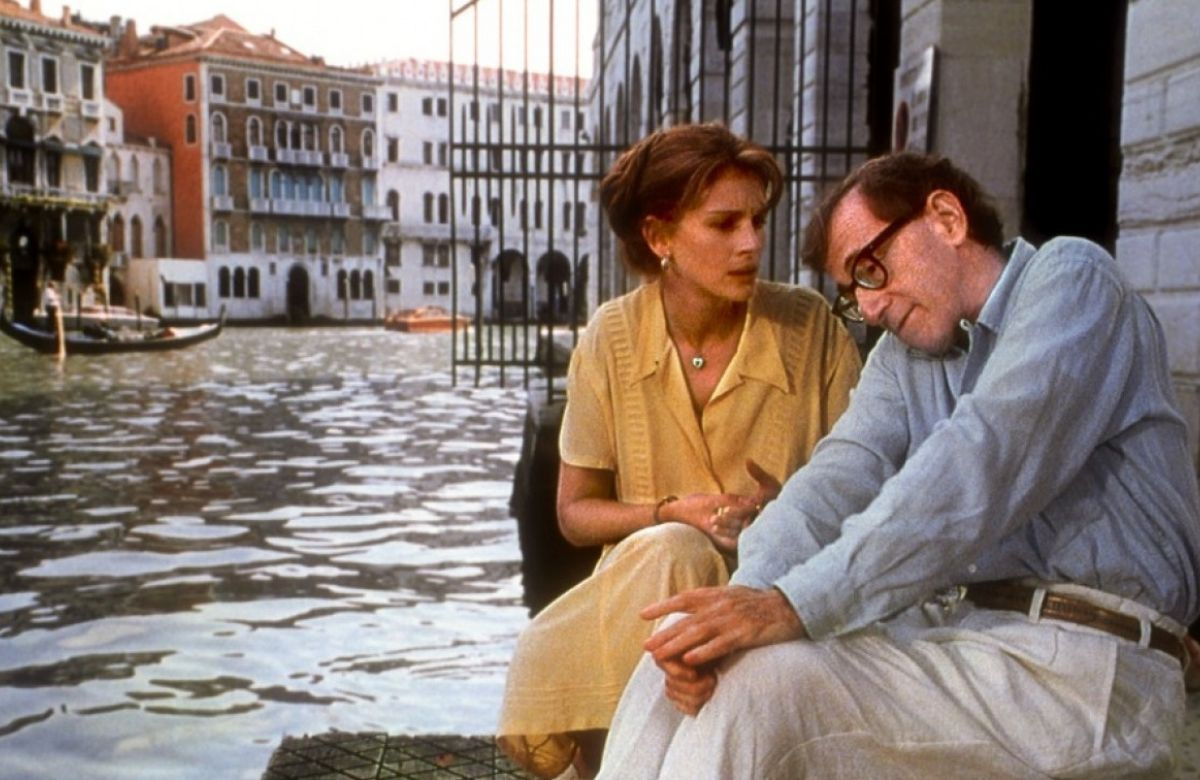
What is all this?
There is a great commotion in the Dandridge family. The eldest daughter left her groom (a boring young man, but with a good credit history) for the sake of a romantic criminal. Her brother has become a staunch Republican and is pushing for guns to be allowed in New York schools. Younger daughters are in love with one boy, mother’s daughter from her first marriage is trying to arrange her father’s personal life (he is still a full member of this progressive family). Grandpa just died. On the top of that, everyone is singing recklessly. Woody Allen’s Broadway past does not let him go: from time to time everyone (including the late grandfather) starts dancing.
Where to look
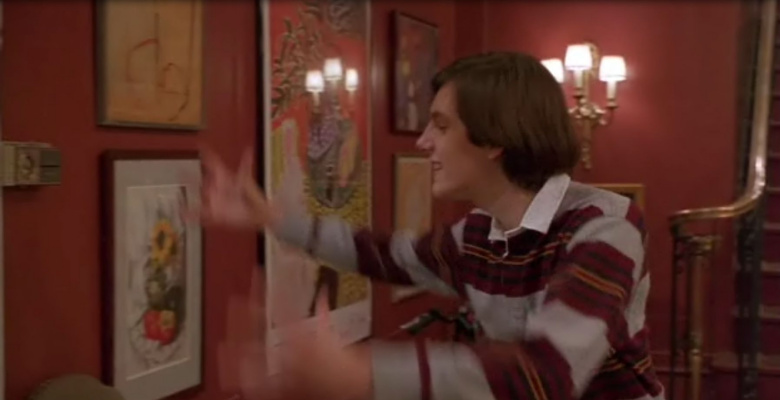
Dandridges are rich, they have Matisse and Brancusi at their walls. Directly under them, young Dandridge shames his dad for his "liberal tricks". However, as it turns out later, the reason for his moods was not a rebellion against the blissful bourgeois lifestyle of his parents, but some kind of blood clot that prevented oxygen from entering his brain.
A special attraction is the scene in the Venetian Scuola San Rocca. At the Crucifixion of Christ painting, Woody Allen enchants Julia Roberts. Here it is, the magic of art! Even if you are a bald short neurotic man, you can easily pull a bird, if you tell her something about "Tintoretto's riot of colours and quick brush". Especially if you shoot a film, in which you are acting yourself.
Crucifixion of Christ
1565, 518×1224 cm
Hollywood Ending (2002)
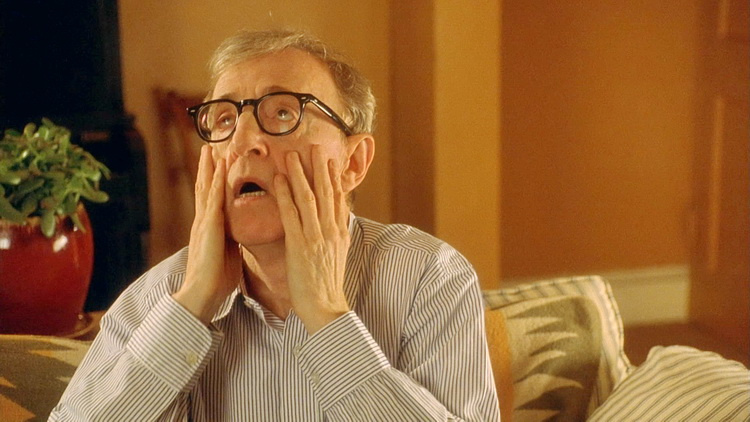
What is all this?
Film director Val Waxman, a winner of two Oscars with a completely unbearable character, is going through hard times: the days of his fame have passed, and although no one doubts that he is a great original artist, even advertising agencies do not want to work with him. Help comes from an unexpected side: his ex-wife, who left Waxman for a successful Hollywood producer (she still suffers from guilt complex), offers him a job. Along the line, hysterical blindness stroke Waxman. Due to stress (he still loves his ex-wife), the director temporarily lost his sight. But his pride does not allow him to confess, and Val continues to shoot with "eyes wide shut". Of course, the result leaves the studio bosses perplexed. But the French are delighted — Parisian newspapers write that Waxman made the best American film in the last 50 years. Admit it, it’s a clever move. After all, you can’t even tell right away what Woody mocked more, American cinema or the French public.
Film director Val Waxman, a winner of two Oscars with a completely unbearable character, is going through hard times: the days of his fame have passed, and although no one doubts that he is a great original artist, even advertising agencies do not want to work with him. Help comes from an unexpected side: his ex-wife, who left Waxman for a successful Hollywood producer (she still suffers from guilt complex), offers him a job. Along the line, hysterical blindness stroke Waxman. Due to stress (he still loves his ex-wife), the director temporarily lost his sight. But his pride does not allow him to confess, and Val continues to shoot with "eyes wide shut". Of course, the result leaves the studio bosses perplexed. But the French are delighted — Parisian newspapers write that Waxman made the best American film in the last 50 years. Admit it, it’s a clever move. After all, you can’t even tell right away what Woody mocked more, American cinema or the French public.
Where to look
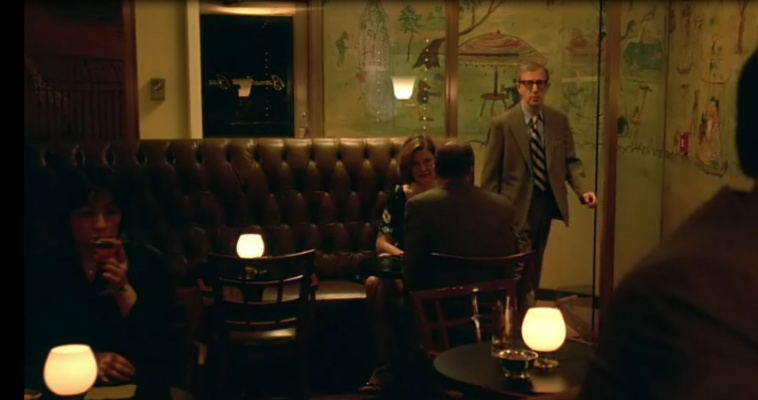
Hollywood Ending is one of Woody Allen’s most moderately cultural films. There is no discussion on the "powerful potential of denial" here, no cameo by Joan Miró. But there is Bemelmans Bar. There is Carlisle hotel in New York with a restaurant of the same name, and there is Bemelmans bar in it. It is Allen’s place of power, his lair, his "rookery". For many years, Woody, a well-known jazz fan, comes here to listen to music and plays the clarinet here himself. The walls painted by the artist Ludwig Bemelmans are a work of visual art here.
Match Point (2005)
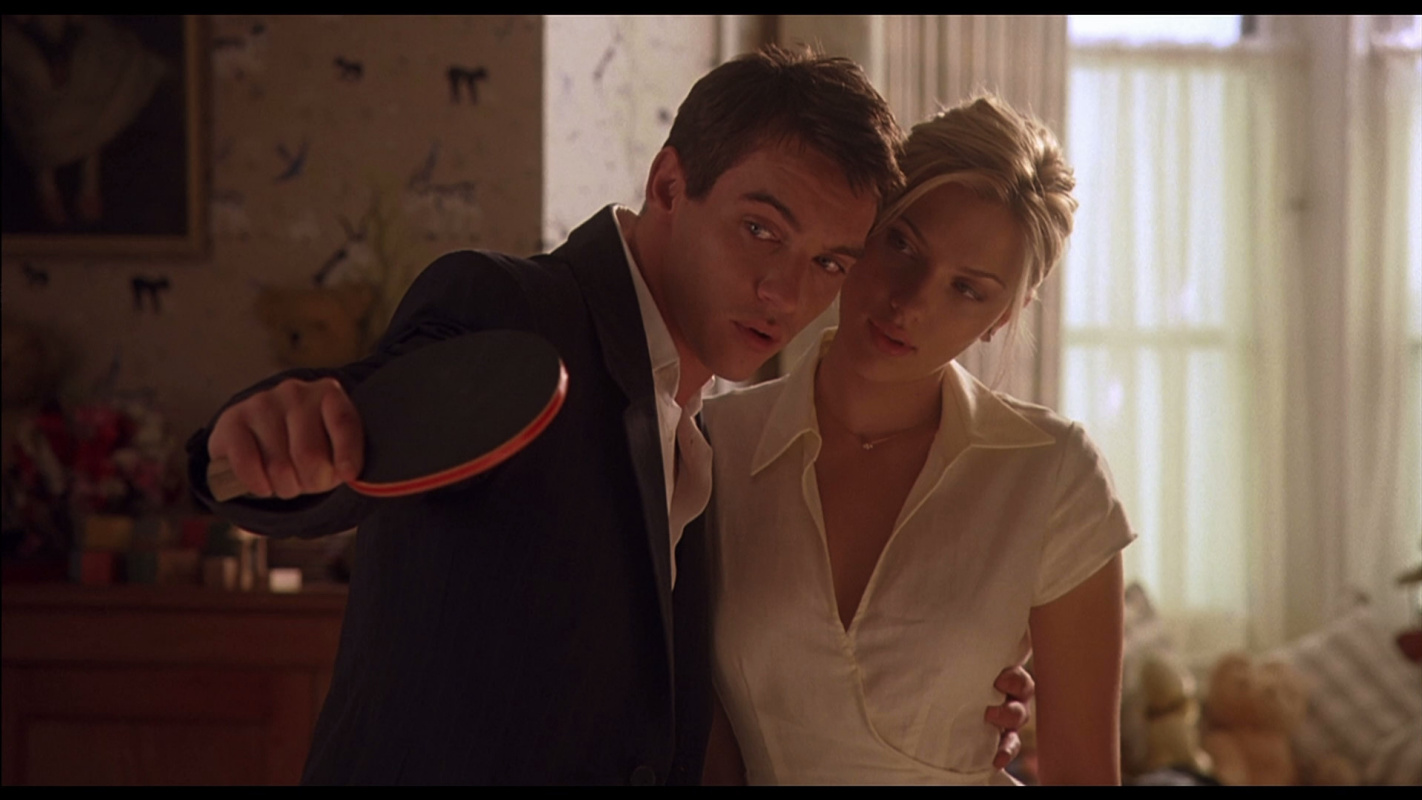
What is all this?
Tom Hewitt, a young British aristocrat, heir to a multimillion-dollar empire , decides to take a couple of tennis lessons. His instructor, Chris, seems a nice guy to him. He is modest, well-mannered, interested in opera, he pathetically orders inexpensive dishes in a restaurant and tries to pay for himself. Tom’s dad likes Chris because he is a "poor boy from Ireland" who tries to break through the hardships of life. His sister likes Chris even more.
If the Hewits weren’t so keen on cocktails and their own democracy, they would probably have noticed that when Chris looks at Tom’s beautiful bride, his eyes resemble those of Malcolm McDowell from A Clockwork Orange.
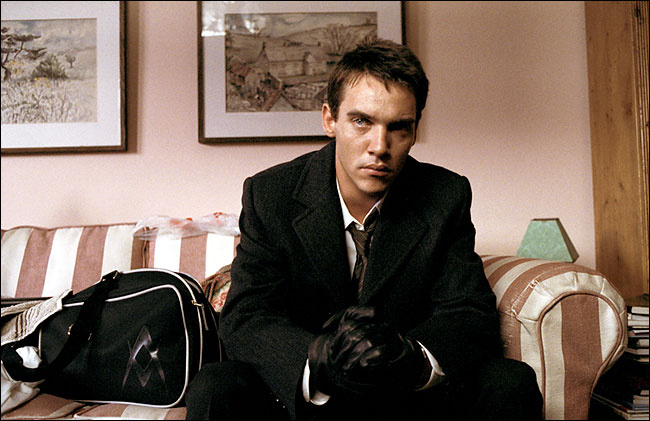
"I would not want to be next to this guy when he stops joking," one shrewd psychotherapist said in the Friends TV series about Chandler Bing, another famous New York wit. In 2005, Woody Allen took a notable step from the Marx brothers towards Dostoevsky and further to Sophocles, who is also quoted in Match Point. In his unusual capacity as an uncompromising playwright, he disappointed some of his fans (and just scared some). However, from that moment on, it is no longer possible not to take him seriously. in Allen’s filmography, Match Point plays the same role, as A Serious Man in the Coen brothers' profile.
Where to look
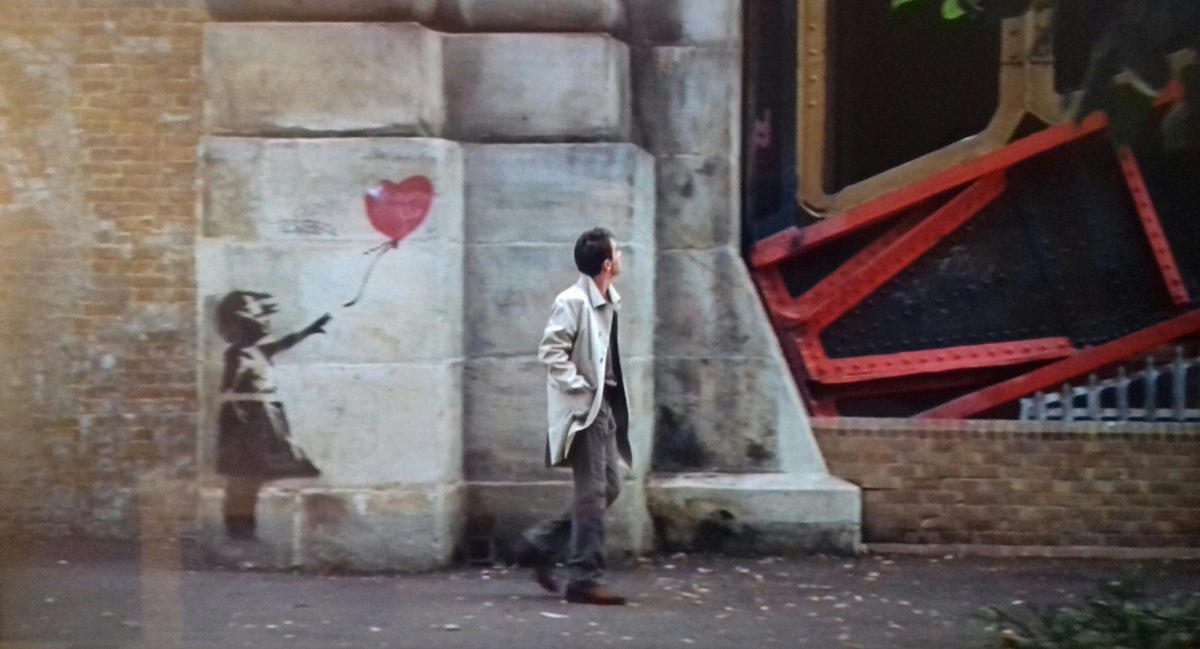
After arriving in London, Chris immersed himself into the abyss of beauty. His fiancée takes him to Tate and Saatchi, and since she is a newly minted gallery owner, their luxurious apartment overlooking the Thames is also heavily covered with modern art. However, all this (including a version of Banksy's Balloon Girl, which Chris does not notice, immersed in his thoughts) is rather an entourage, attributes of high society life, which the hero longs for. Another kettle of fish is the portrait that appears in his apartment by the end of the film. Critics believe that this work is meaningful: the volume of Dostoevsky at the beginning foreshadows the disintegration of the personality, whereas the portrait indicates that the process is over. Sadness, resignation before the inevitability of tragedy, or alternatively, resignation before fate — all this is written all over the handsome man’s face. At the time of Take The Money And Run, Woody Allen really loved simple visual rhymes. Allen, who directed Match Point, is certainly more difficult and inventive, but who knows, perhaps the critics are right.
One way or another, the "sad face" is a self-portrait of the British artist Tai-Shan Schierenberg.
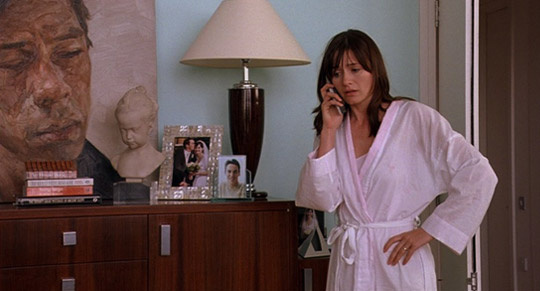
Vicky Cristina Barcelona (2008)
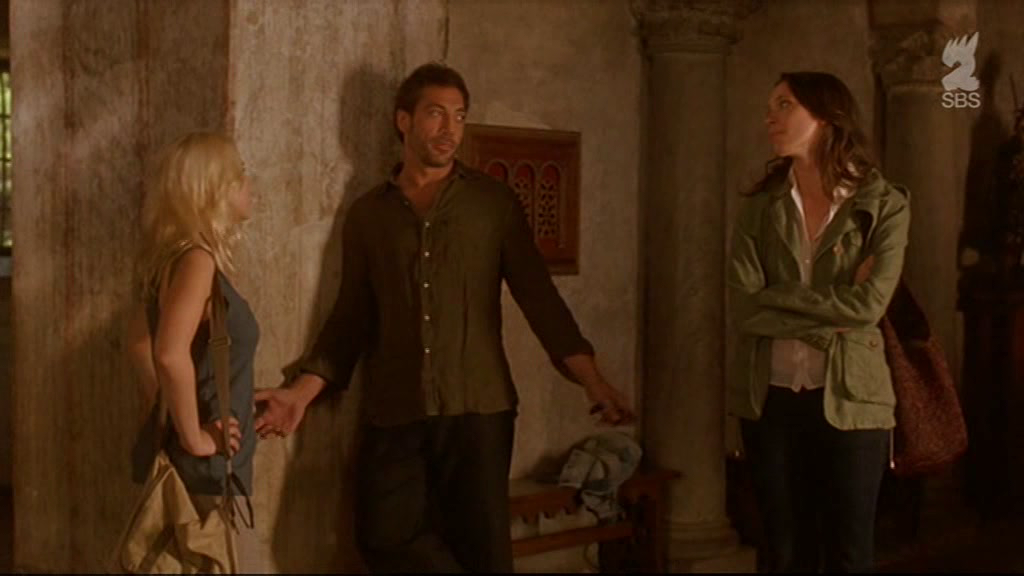
What is all this?
Two American women who have arrived in Barcelona (one is going to write a work "on Catalan identity", the other wants to get some air) meet a local artist in a café. He expeditiously tells the girls that life is short and full of pain. Rare good moments need to be appreciated, therefore the three of them should fly to Oviedo to look at one very beautiful sculpture, have a drink, and if the weather is good, then make love. One of the women likes the offer, the other feels offended, but also goes. The next few days would change the lives of all the three in different ways, but equally irreversibly.
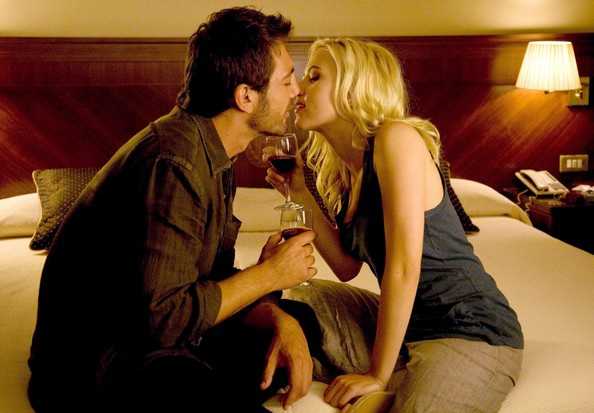
Perhaps Woody Allen, like no one, knows how to present clichés in such a way that they are not routine platitudes anymore, but undeniable and often painful truth of life. Balancing on the verge of a tourist cheapness, accompanied by the most vulgar guitar plunk, he made an accurate and unexpectedly sad film about the fact that in true art, as in true love, you cannot possess anything, you can only pursue ever-elusive beauty. The municipality of Barcelona that financed this (they really wished to have a tourist attraction, a kind of Catalan Amélie) had a right to take offence and feel cheated. Not at all — an Allen’s monument was even erected in Oviedo.
Where to look
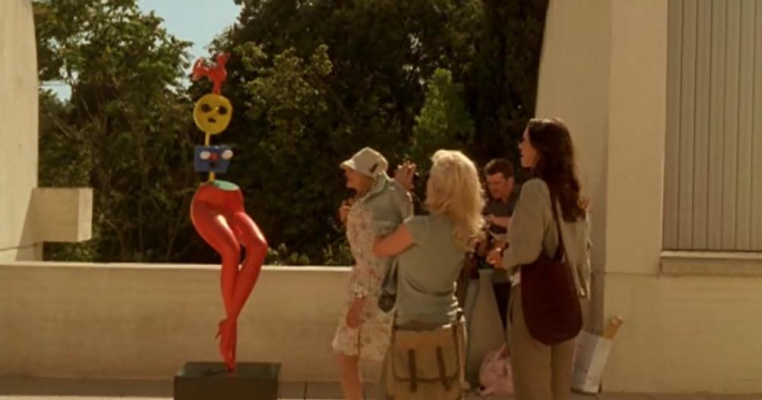
Walking through Barcelona, it is certainly difficult to miss Joan Miró: the camera showed either his cyclopean mural at the city airport, or his Girl Escaping sculpture now and them. However, this is not a formal tribute to the native flavour. Allen and Miró have a long history; for example, a picture of this artist can be seen in the Sweet and Lowdown film, which Woody shot back in 1999.
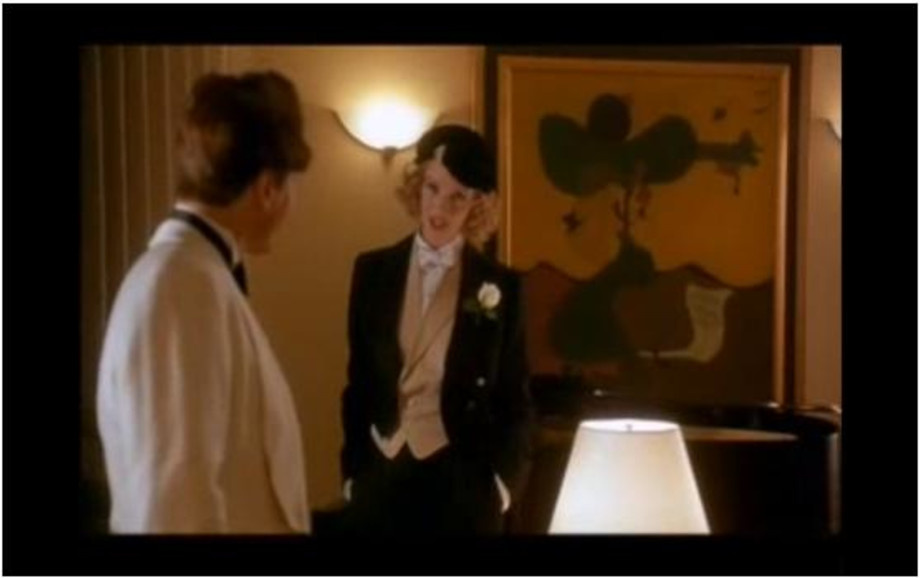
As for the disputes between the heroes of Penelope Cruz and Javier Bardem over plagiarism, it is easy to judge them: the Catalan artist Agustí Puig painted for both of them in the film.
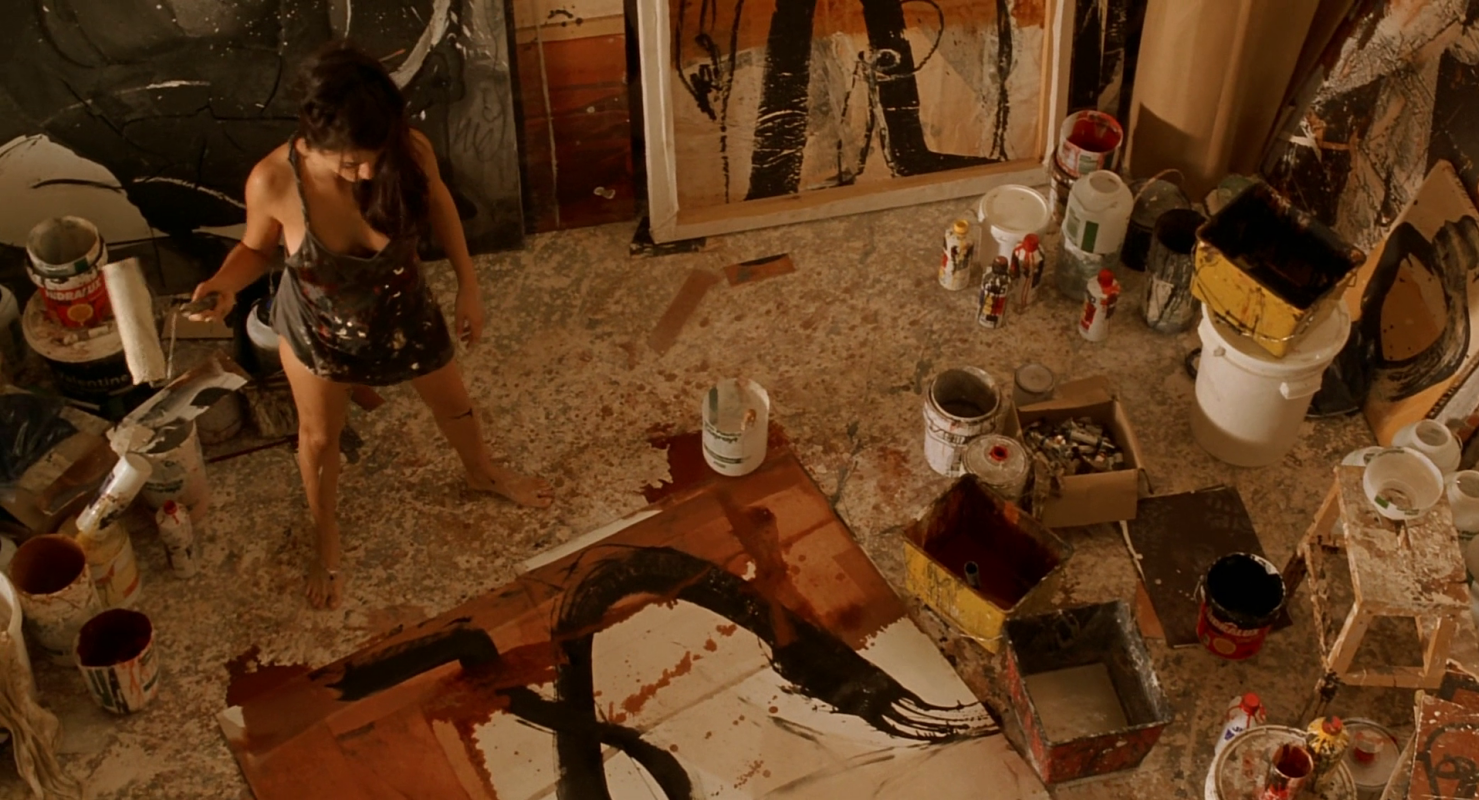
By the way, he painted The Protector II picture especially for the Woody Allen film. But for some reason unknown to us, it never got into the frame .
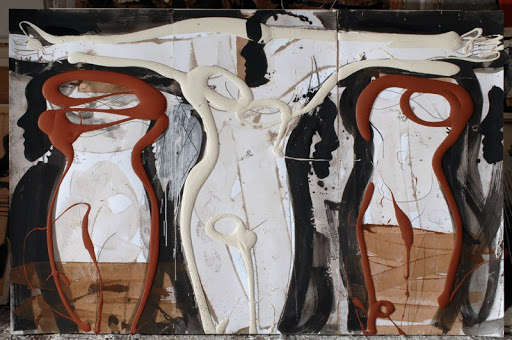
Agustí Puig. The Protector II. 2008
Midnight in Paris (2011)

What is all this?
Successful screenwriter Gil Pender is going through a creative crisis: in Hollywood, Pender is ordered standard conveyor sitcoms, while he wants to write the Great American Novel. Pender is looking for inspiration in Paris: it seems to him that if he wanders the local streets in the rain, buys old records at a flea market, and drinks in non-pathetic pubs far from tourist routes, just like Hemingway and Fitzgerald did, words will appear on paper themselves. Gil’s fiancée (and her rational cousins) reasonably consider him an eccentric. Their suspicions are intensified after Pender finds a hole in time: at midnight precisely a portal opens through which you can get to Paris in the times of Hemingway, Cole Porter and Gertrude Stein.
Successful screenwriter Gil Pender is going through a creative crisis: in Hollywood, Pender is ordered standard conveyor sitcoms, while he wants to write the Great American Novel. Pender is looking for inspiration in Paris: it seems to him that if he wanders the local streets in the rain, buys old records at a flea market, and drinks in non-pathetic pubs far from tourist routes, just like Hemingway and Fitzgerald did, words will appear on paper themselves. Gil’s fiancée (and her rational cousins) reasonably consider him an eccentric. Their suspicions are intensified after Pender finds a hole in time: at midnight precisely a portal opens through which you can get to Paris in the times of Hemingway, Cole Porter and Gertrude Stein.
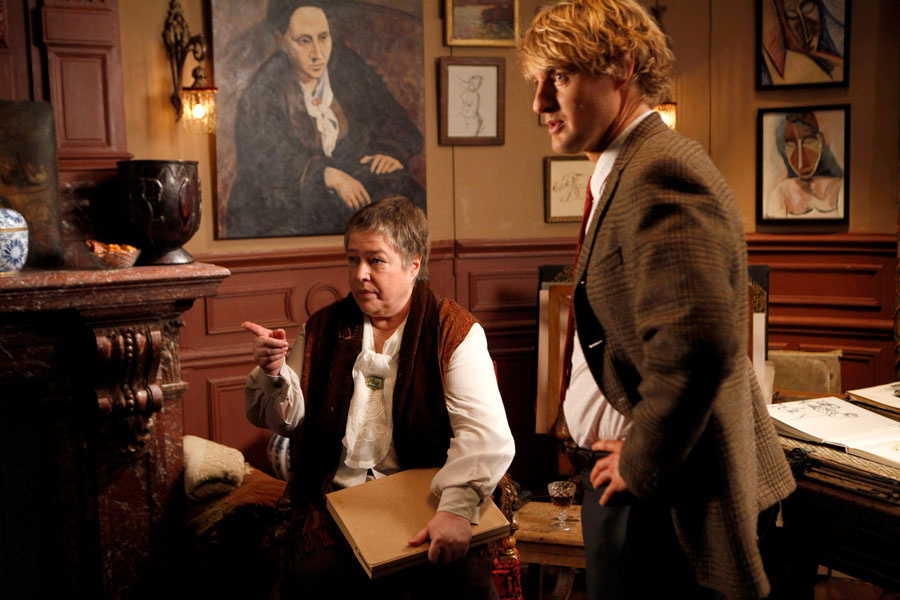
To voice a simple moral that all times are good in their own way, Woody Allen spared no resources: not only works by Picasso, but also Picasso himself (as well as Dalí, Degas, Matisse and Toulouse-Lautrec) fall into the postcard glossy frame
now and then. The density of beauty is extremely high here (even excessive) — even the tour guide in the Rodin Museum is played by Carla Bruni.
Portrait Of Gertrude Stein
1906, 100×81 cm
Where to look

Here, almost every shot presents or at least promises a meeting with some kind of masterpiece: the kaleidoscopic flickering of cult canvases make you faint with time. The Bather by Picasso stands somewhat distictive; it’s even awarded a separate review by Gertrude Stein: "A beast from the Place Pigalle, a whore with a frantic appetite!" In one of the local shots, Picasso’s Bather stands adjacent to Cézanne's Bathers, and it is no accident. However, if this a competition suggests no medals — which side takes Woody Allen remains a mystery.
Bathers
1894, 50×60 cm
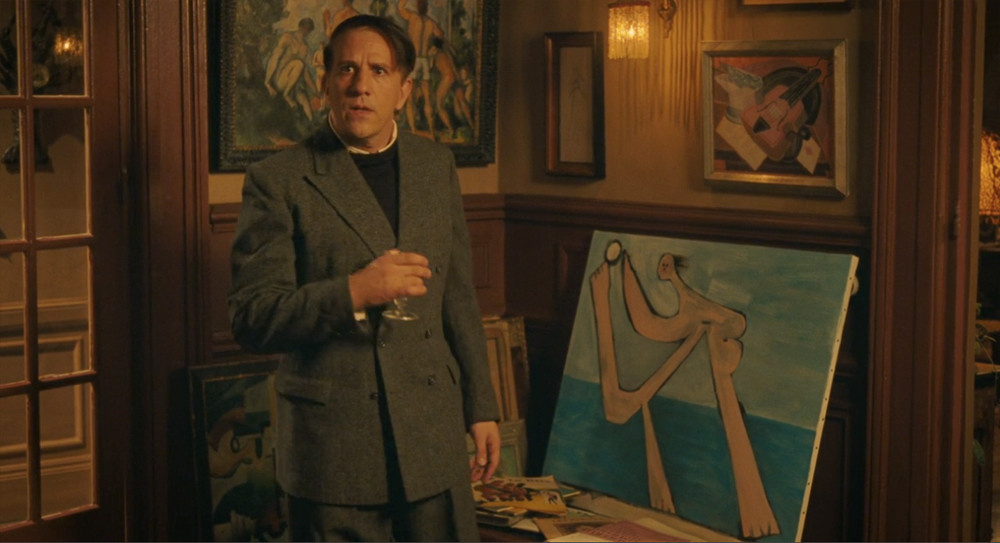
A Rainy Day in New York (2019)
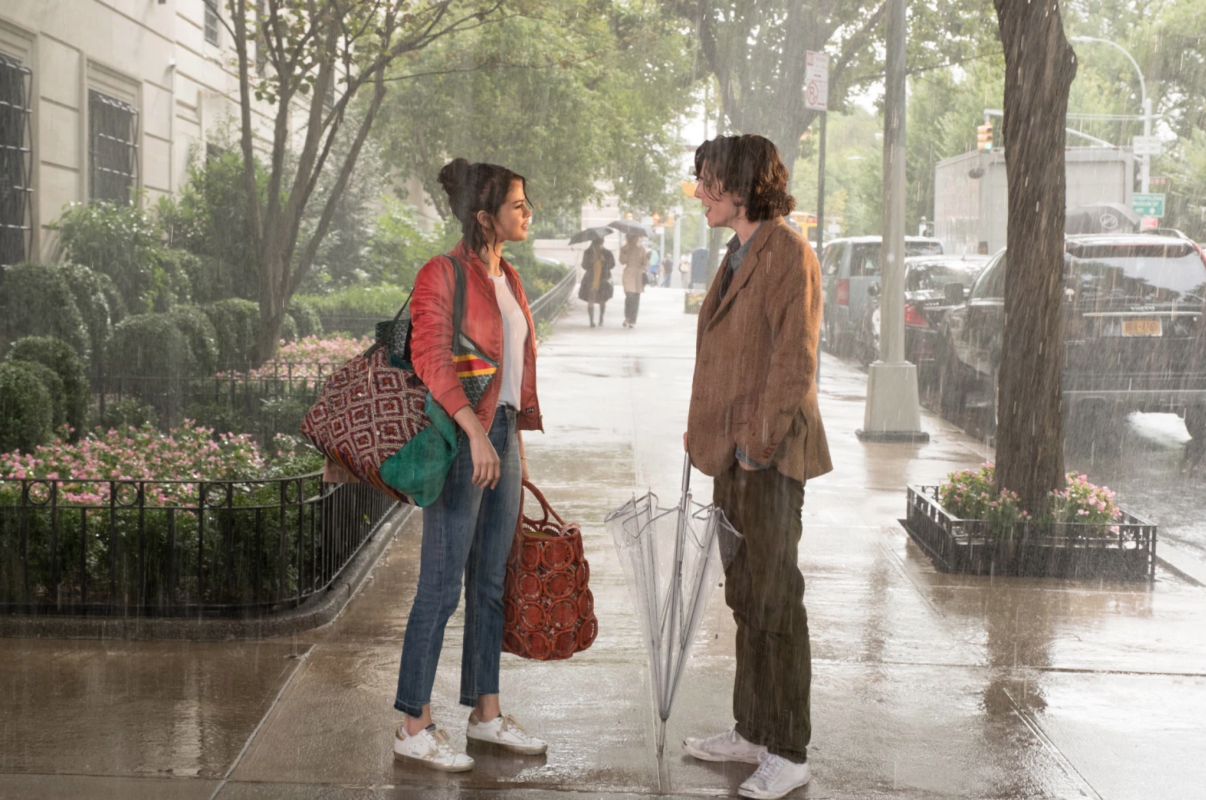
What is all this?
Gatsby and Ashleigh are going to spend a weekend in New York. Ashleigh expects to interview an intellectual director, widely known in narrow circles, for the university newspaper. Gatsby (who grew up in Manhattan) wants to show her his New York, an old city only known to him. They are a little over 20, they are in love (at least they think so), they think they planned everything well. However, the city has its own plans for them. It would rain, the intellectual director would drink too much, an uncle, an aunt and an ancient Egyptian sarcophagus will stand in their way. In short, a lot of things will happen before Ashleigh ends up on a rainy street barefoot and in someone else’s raincoat, and Gatsby at his mother’s party in the company of a very expensive demi-mondaine.

A Rainy Day in New York is a relaxed, optional, childish and very charming movie. It seems that Woody planned all this mess to inform that he was not in line with the third millennium. Having abandonned our time, like an unloved girl, he arranges a date with his own youth under the Central Park clock. And although all his "special signs" are there, from the tweed jacket to the Bemelmans bar, the feeling persists that the movie is shot not by 84-year-old Woody Allen, but by young John Hughes (or even Kevin Smith). Oddly enough, this is a compliment.
Where to look
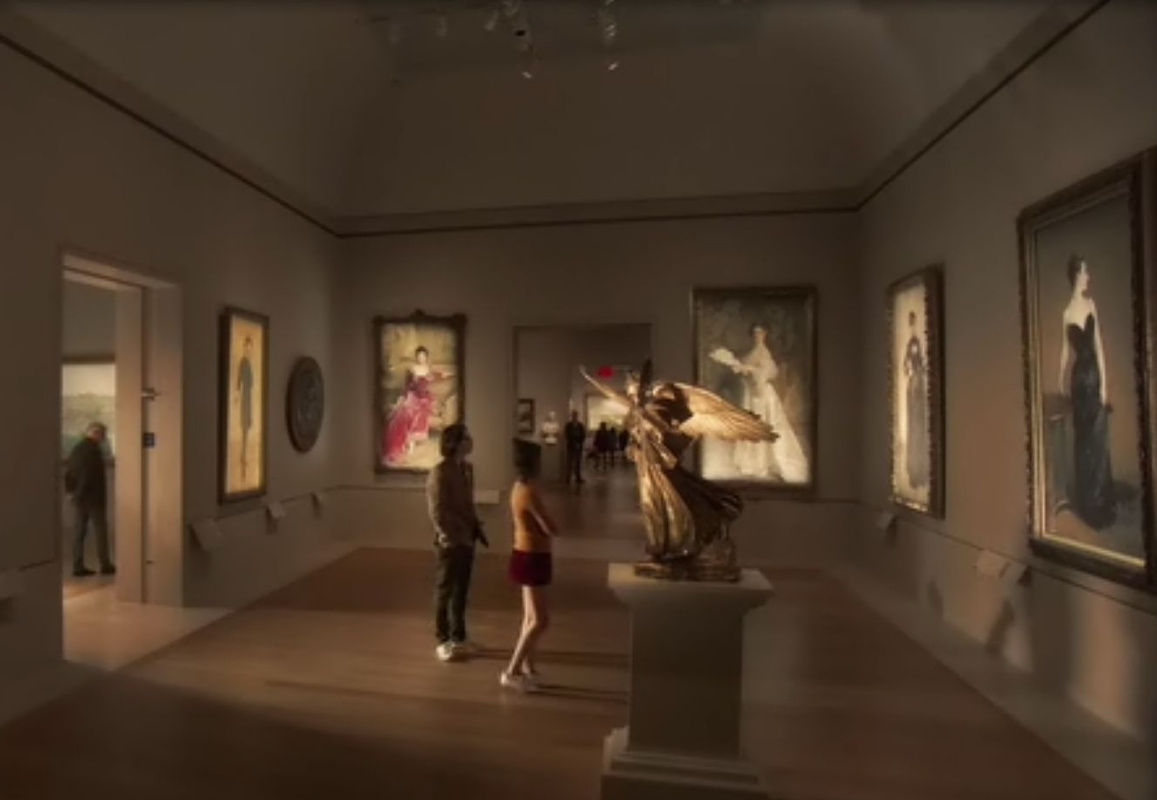
Going to New York, young Gatsby dreams of getting into MoMA for an exhibition of Weegee (master of crime photography and cult photo artist). But he gets to the Met instead, where he lingers at the portrait of Madame X by John Sargent.
Madame X (Madame Gautreau)
1884, 208.6×109.9 cm
Gatsby knows this picture well — his mother dreamed that Sargent would paint her in this image. Closer to the finale, the hero learns that his mother and Madame Gautreau have more in common than he could have imagined.






